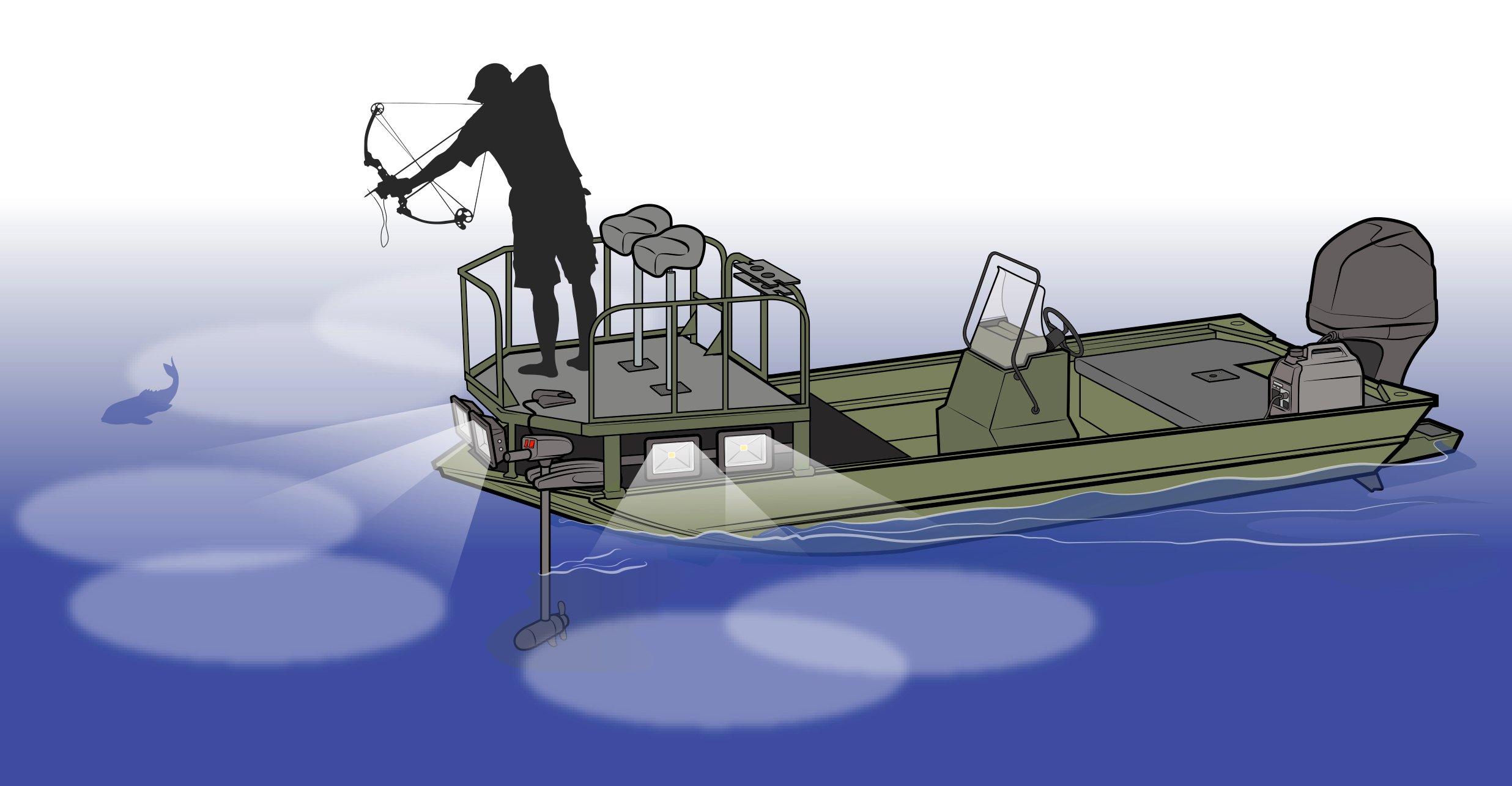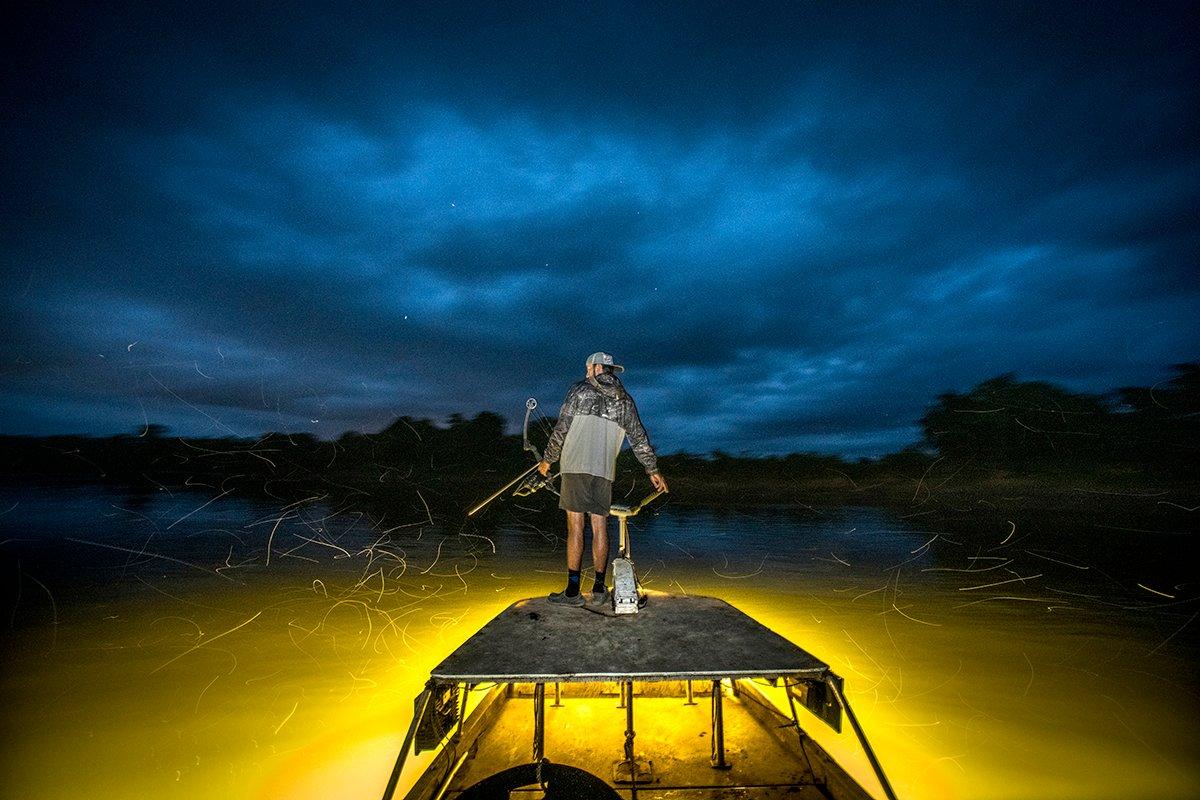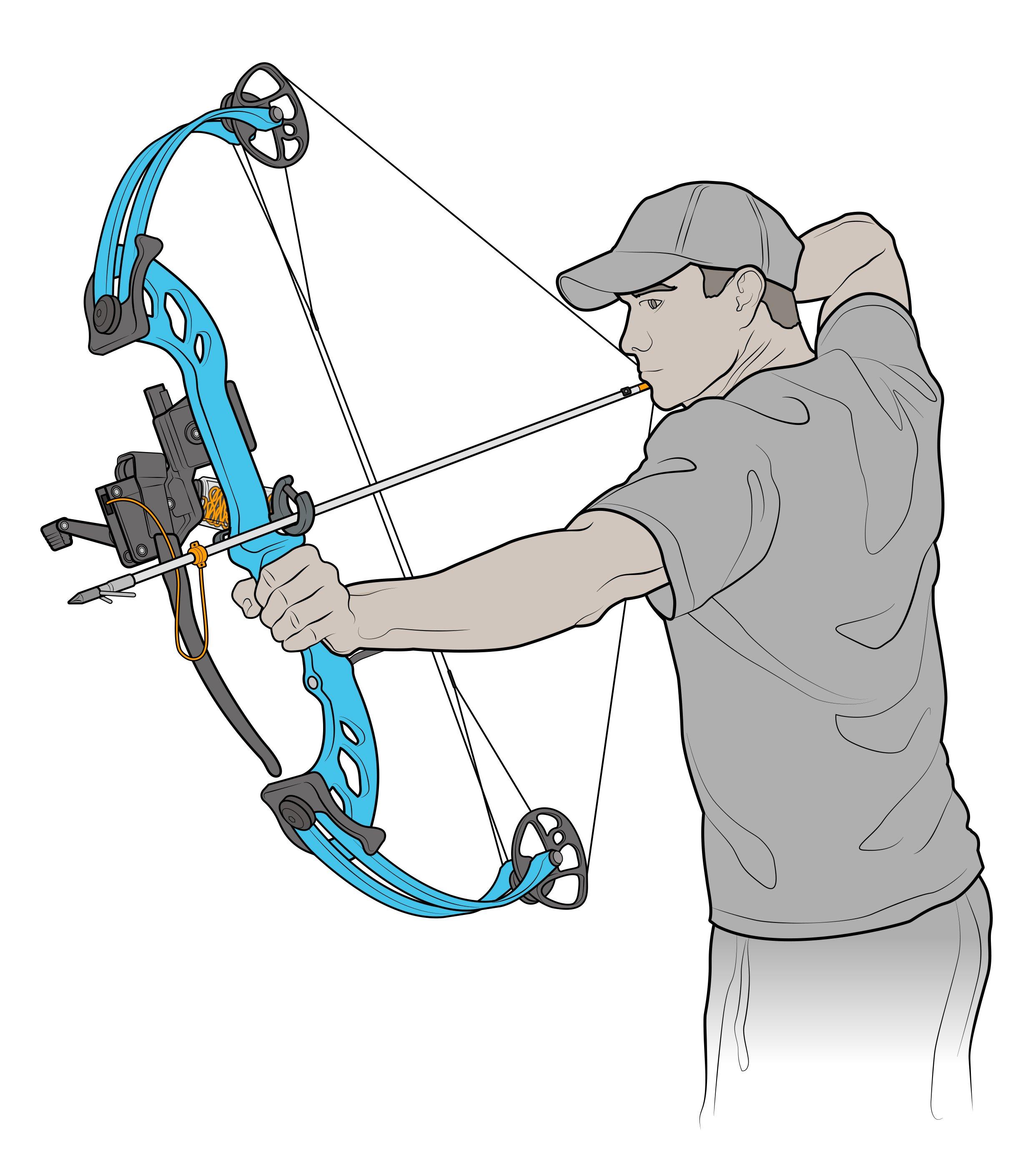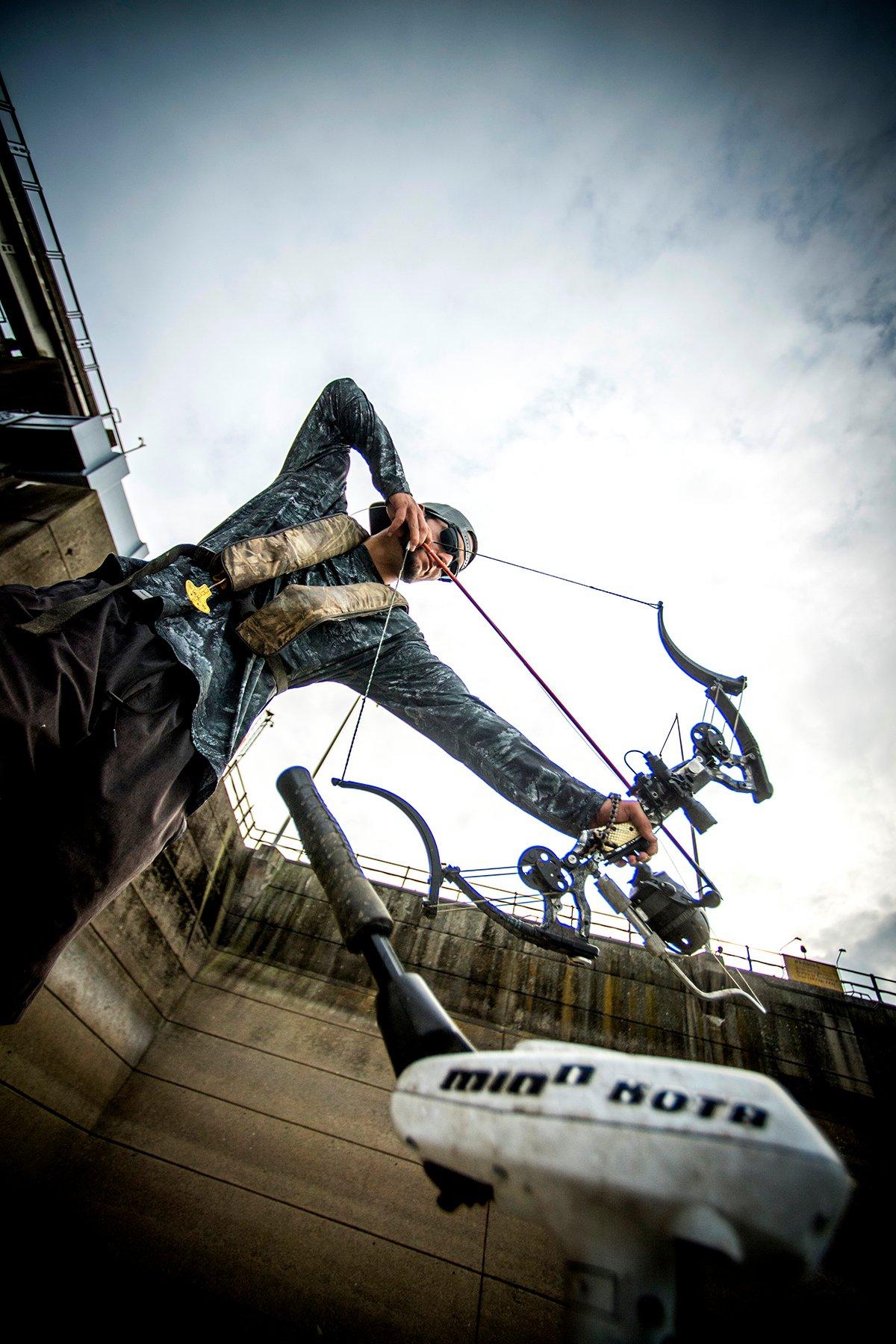Good archery shooting form and aiming fundamentals will put more fish in your boat
If you've never been bowfishing, get ready to do a lot of missing, at least for the first little while. Bowfishing shot opportunities happen fast, usually at moving targets and unknown distances. But there are unique challenges too, including light refraction and judging distances under water. Still, you'll be surprised at how many fish you'll hit once you get the hang of it. Follow these tips from experienced bowfishermen and archery coaches, and you'll be on your way to a heavy haul of rough fish.
Fish are fast. Bowfishing requires split-second shots. However, unlike with a rod and reel, there is no catch-and-release bowfishing.
Learn to ID Fish
Fish are fast. Bowfishing requires split-second shots. However, unlike with a rod and reel, there is no catch-and-release bowfishing. That's why it's imperative to properly identify fish as soon as you see them, and to review the regulations to learn which species you're legally allowed to take with bowfishing equipment. Never take a shot unless you're 100% confident in what you're shooting at.
Most state fish and wildlife agencies have fishing guides with descriptions of game fish and rough fish. Review photos so you can easily identify legal targets. Study the pictures and focus on the outlines of legal fish. Learn their body and fin shapes. Another resource, Take Me Fishing, has a page dedicated to fish species. You'll react quicker and more confidently when you can identify legal fish in a hurry.
(Don't Miss: Best Bow For Bowfishing?)
Don't Forget Form
Unfortunately, some bowhunters skip learning the basic foundations of shooting form. When they learn to group arrows from friends and family members instead of proper techniques from an archery coach, they might not understand how good technique helps them execute the perfect shot. Understanding the mechanics behind the technique helps archers make the shot every time.
Good archery form and focus apply in any scenario, regardless of if it's bowfishing or a standard FITA range. I always recommend starting there, said Virginia Hankins, a USA Archery Level 3 NTS Archery Coach who also teaches bowfishing using the Archery Trade Association's Explore Bowfishing curriculum.
Proper archery form includes the following steps: stance, nock, hook and grip, posture, raise the bow, draw, anchor, transfer to hold, focus and release to follow-through. Having these in check ensures consistent shooting. Lack of follow-through is a mistake many hunters make.
So many times you want to drop your arm to see if you hit that fish; as you're dropping your arm, you will shoot underneath the fish, said Nick Tramp, a mentor and agency coordinator at Nebraska's Bowfishing Mentor Program.
Develop Instinctive Shooting Skills
Most bowfishing calls for instinctive shooting, and so few bowfishermen have sights on their bows. Instinctive shooting is commonly used by traditional archers, but it can be an adjustment for compound archers to learn. ATA's Explore Bowfishing curriculum likens instinctive shooting to throwing a ball. Once you've learned to throw a baseball there's no need to measure the distance to your partner's glove; the brain just knows. That's how instinctive shooting in archery works. With enough practice, you will just know where to aim to hit your mark.
But consistent form and practice are the keys to instinctive shooting. It's important to watch the arrow in flight so your brain learns how to adjust for future shots. If you're hitting left or right, you might not be anchoring the same every time. If the arrow is hitting high or low, you're likely misjudging the distance. As long as you maintain consistency, your brain will make the adjustments for you.
(Don't Miss: How to Set Up a Bowfishing Bow)
Learn to Read Refraction
Refraction isn't a word that appears in everyday conversation, but it's always top of mind for bowfishermen. Refraction is the phenomenon of light passing through the water and making objects appear closer than they are in reality. For anglers, this translates to believing that the fish appears closer to the surface than it is.
Due to refraction, most new bowfishermen shoot over the top of the fish. Light refraction distorts distances so it's up to the bowfishermen to compensate with their aim. Because fish are deeper than they appear, you have to aim low. The deeper the fish is, the deeper you aim, Tramp said.
Some use the 10-4 rule. For every 10 feet between you and the fish, aim 4 inches below. If the distances doubles, double how low you aim. Bowfishermen also use the 1-3 rule, which is based on water depth. For every foot the fish is beneath the surface, aim 3 inches below the fish.
Get to Know Your Gear
Being familiar with your bowfishing equipment is a major key to success. Even if you're using a bow you shoot often, it's important to be comfortable with the added accessories like the reel and arrow. By adding in new elements gradually, you can have a chance to get acclimated to each change without getting overwhelmed, Virginia Hankins said.
Don't forget to practice shooting in your bowfishing clothing, especially if you'll be out on a boat in a lifejacket. Lifejackets can change where you anchor. Tramp said he once saw someone learn this lesson the hard way with a self-inflating lifejacket. When the woman shot an arrow, the line caught on the vest and inflated it.
(Don't Miss: Bowfishing: 12 Fish Species to Target)
Practice Makes Perfect
Fortunately, there are ways to develop bowfishing skills through practice. Tramp teaches people proper aiming technique by using wooden targets and pool noodles. The pool noodles serve as a bobber. The targets are tied to the noodles using paracord. The targets can be adjusted to different depths to help people get a feel for where to aim at different depths.
Hankins uses a similar method. You can practice with underwater targets like balls or leaves or soft items to tune your eye, Hankins said. I like tying brightly colored soft, floaty objects on lines to scuba diving weights. That way the weight keeps them from moving around but I can have them staged at different heights.
Hankins also recommends practicing judging distances. This is also great practice for bowhunting on land. This can be done in your backyard with an object and a rangefinder. Place the object at varying distances. Take notice of how its size changes. Then guess its distance. Double-check your guess with a rangefinder. This exercise will help train your eye to judge distances.
Take your time and build a progression-based plan. You don't have to do everything at once, Hankins said. Take one day to research gear. Take another day to just practice distances. Allow yourself to learn and grow in your confidence. Once you do that, you'll have less stress and more fun.
Bowfishing skills are developed through thoughtful practice and experience on the water. They don't happen overnight. But by following some of this advice you're giving yourself a leg up for shooting more fish with fewer tries.
(Don't Miss: 6 Reasons to Buy Bows at the Local Archery Shop)











